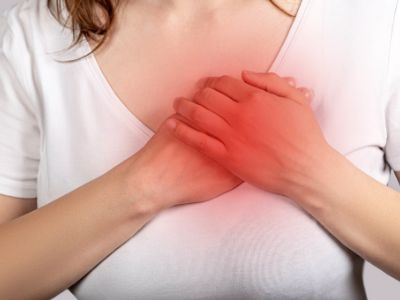Erosive Esophagitis Causes and Treatments

Esophagitis is inflammation, irritation, or swelling of the lining of the esophagus. Erosive esophagitis is a type of esophagitis in which there is damage to the tissue lining. Treatment for esophagitis depends on the underlying cause and the severity of tissue damage.

Symptoms of Erosive Esophagitis
- Heartburn
- Chest pain
- Dysphagia or discomfort swallowing
- Feeling like something is stuck in your throat
- Burning sensation in the esophagus
- Bleeding or bloody stools and vomit
- Black or tarry stools
Causes and Risk Factors of Erosive Esophagitis
Several factors can contribute to an increased risk of developing esophagitis:
- Refluxed stomach acid. The most common cause of esophagitis is the backflow of stomach acid into the esophagus. Other triggers of reflux include pregnancy, obesity, smoking, alcohol, caffeinated beverages, and fatty or spicy foods.
- Infections. These include infections caused by viruses, fungi, and bacteria. HIV/AIDS causes weakened immune systems, which makes infection more likely.
- Radiation injury. Esophagitis can be caused by radiation treatment in the chest or neck area during cancer treatment.
- Injury from chemicals. An esophagus injury can be very severe and even life-threatening if strong chemicals like drain cleaners are ingested.
- Excessive vomiting. Excessive vomiting can cause inflammation of the esophagus because of the acid contained in the vomit.
- Pills getting stuck. If a pill gets stuck in the esophagus, it can cause burning of the lining. A motility disorder may also cause the esophageal muscles to lack the ability to contract properly to propel contents into the intestines. Scarring or strictures may narrow the esophagus, but so can scarring and strictures; scarring and strictures may narrow the esophagus.
Esophagitis Diagnosis
- Upper endoscopy. The esophagus is viewed using a long, flexible lighted tube called an endoscope.
- Biopsy. The test involves removing a small sample of esophageal tissue, which is then examined under a microscope in a laboratory.
- Upper GI series. During this procedure, X-rays are taken of the esophagus after drinking a barium solution. X-rays show white spots on the esophageal lining due to the coating of barium and allow doctors to view certain abnormalities of the esophagus.
Treatment
Treatment for esophagitis depends on the type and severity of the symptoms. Over-the-counter drugs like antacids, or medications that block acid production. Doctors may also recommend surgery to strengthen the valve that separates your stomach and your esophagus.
Pantoprazole is also a recommended medication for most types of esophagitis. This medicine works by blocking acid production in the stomach. Buy Pantoprazole online to treat erosive esophagitis and GERD.



